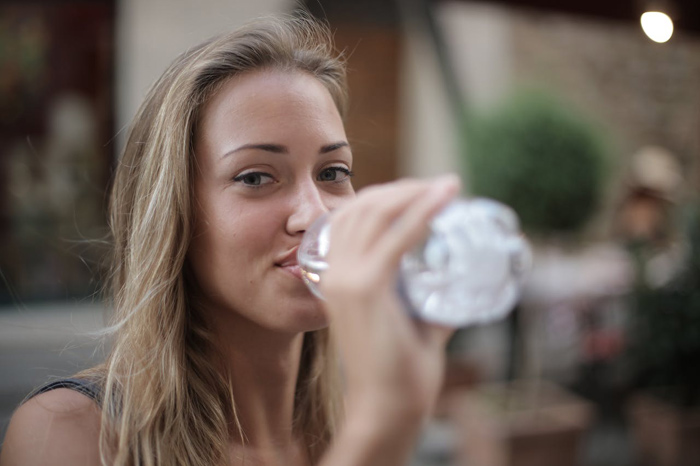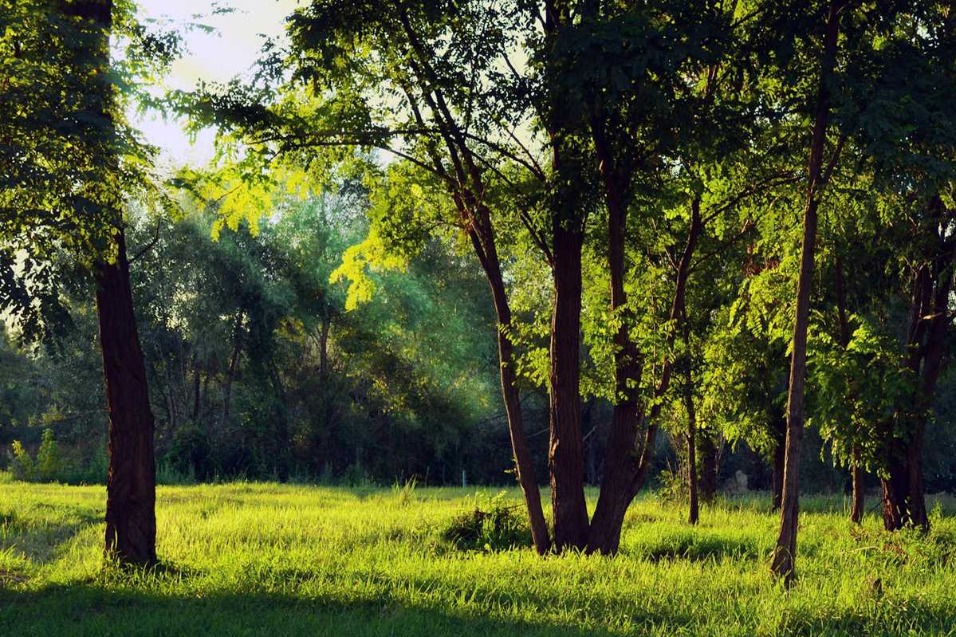研究:每升瓶装水含有数十万个纳米塑料 可入侵人体细胞 Bottled water contains thousands of nanoplastics so small they can invade the body’s cells, study says
中国日报网 2024-01-09 17:41

一项开拓性新研究发现,瓶装水中所含的塑料颗粒物比原先预想的多出10到100倍。这项研究采用了一项新技术,可以检测出瓶装水中含有的纳米塑料。研究发现,每升瓶装水平均含有24万个塑料颗粒物,其中90%都是纳米塑料。纳米塑料可以入侵人体细胞和主要器官组织,对人体健康十分有害。

In a trailblazing new study, researchers have discovered bottled water sold in stores can contain 10 to 100 times more bits of plastic than previously estimated — nanoparticles so infinitesimally tiny they cannot be seen under a microscope.
在一项开拓性新研究中,研究人员发现,商店售卖的瓶装水所含的塑料颗粒物比原先预计的多出10到100倍,有些纳米塑料小到用显微镜也看不见。
At 1,000th the average width of a human hair, nanoplastics are so teeny they can migrate through the tissues of the digestive tract or lungs into the bloodstream, distributing potentially harmful synthetic chemicals throughout the body and into cells, experts say.
专家指出,这种纳米塑料的体积是人类头发平均直径的千分之一,可以通过消化道或肺部进入血管,导致可能有害的人工合成化学物质散布周身并进入细胞。
One liter of water — the equivalent of two standard-size bottled waters — contained an average of 240,000 plastic particles from seven types of plastics, of which 90% were identified as nanoplastics and the rest were microplastics, according to the new study.
新研究发现,每升瓶装水(相当于两瓶标准瓶装水)平均含有24万个塑料颗粒物,这些颗粒物来自7种不同塑料物质,90%的塑料颗粒物被认定为纳米塑料,其他是塑料微粒。
Microplastics are polymer fragments that can range from less than 0.2 inch (5 millimeters) down to 1/25,000th of an inch (1 micrometer). Anything smaller is a nanoplastic that must be measured in billionths of a meter.
塑料微粒是直径小于5毫米的微小聚合物,最小的塑料微粒直径是2.5万分之一英寸(1微米)。比最小的塑料微粒还小的则是用十亿分之一米来测量的纳米塑料。
In the new study, published Monday in the journal Proceedings of the National Academy of Sciences, researchers from Columbia University presented a new technology that can see, count and analyze the chemical structure of nanoparticles in bottled water.
这项本周一(1月8日)发表在《美国国家科学院院刊》的新研究指出,哥伦比亚大学的研究人员采用了一种新技术,可以确定、计算和分析瓶装水中纳米颗粒的化学结构。
Instead of 300 per liter, the team behind the latest study found the actual number of plastic bits in three popular brands of water sold in the United States to be in between 110,000 and 370,000, if not higher. (The authors declined to mention which brands of bottled water they studied.)
这项新研究背后的团队发现,每升瓶装水所含的塑料颗粒物不是300个,而是11万到37万个,甚至更多。研究所用的瓶装水来自在美国销售的三个大众品牌,但作者不愿透露是哪些品牌。
The innovative new techniques presented in the study open the door for further research to better understand the potential risks to human health, said Jane Houlihan, research director for Healthy Babies, Bright Futures, an alliance of nonprofits committed to reducing babies’ exposures to neurotoxic chemicals, who was not involved in the study.
致力于减少婴儿与神经毒性化学物质的接触的非盈利联盟组织“健康婴儿光明未来”的研究主管简·霍利亨表示,这项研究提出的创新技术为进一步研究打开了大门,有助于更好地了解塑料对人类健康的潜在风险。霍利亨没有参与这项研究。
“Infants and young children may face the greatest risks, as their developing brains and bodies are often more vulnerable to impacts from toxic exposures.” said Houlihan in an email.
霍利亨在电邮中写道:“婴幼儿可能面临最大风险,因为他们的大脑和身体还在发育中,对有毒物质的抵抗力往往更低。”
Nanoplastics are the most worrisome type of plastic pollution for human health, experts say. That’s because the minuscule particles can invade individual cells and tissues in major organs, potentially interrupting cellular processes and depositing endocrine-disrupting chemicals such as bisphenols, phthalates, flame retardants, per- and polyfluorinated substances, or PFAS, and heavy metals.
专家指出,纳米塑料是对人类健康最有害的塑料污染源。这是因为纳米塑料可以入侵人体细胞和主要器官组织,可能会干扰细胞的生物过程,在体内积淀打乱内分泌的化学物质,比如双酚类、邻苯二甲酸盐、阻燃剂、全氟或多氟化物、全氟烷基磺酸盐、重金属等。
There are things people can do to reduce their exposure to plastics, said Houlihan.
霍利亨指出,人们可以采取一些行动来减少与塑料的接触。
"We can avoid consuming foods and beverages in plastic containers. We can wear clothing made from natural fabrics and buy consumer products made from natural materials,” Houlihan said. “We can simply take stock of the plastic in our daily lives and find alternatives whenever feasible.”
霍利亨表示:“我们可以避免摄入放在塑料容器中的食品和饮料。我们可以穿着用天然面料制作的衣服,购买用天然材质生产的消费品。我们可以仔细审视日常生活中的塑料制品,并在可行的情况下寻找替代品。”
英文来源:美国有线电视新闻网
翻译&编辑:丹妮

















 英语点津微信
英语点津微信 双语小程序
双语小程序